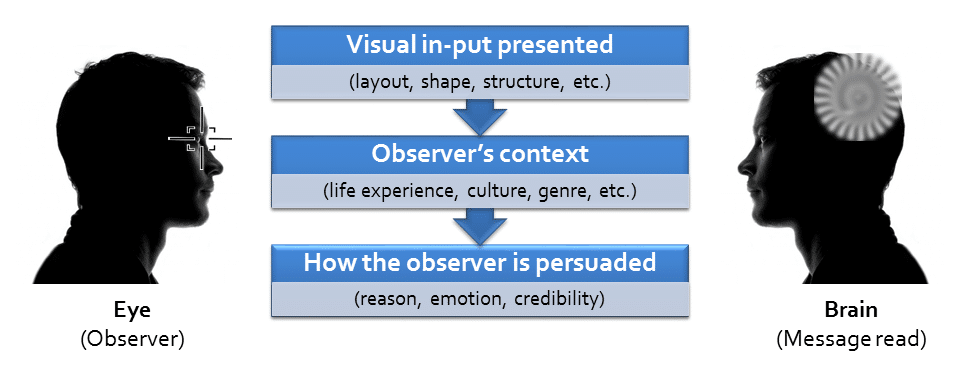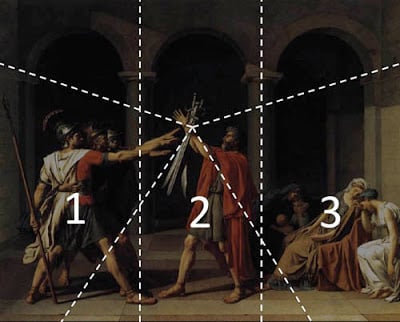When we wonder about what is a work of art we reflect on aspects that go far beyond the physical object. In its traditional definition, a work of art is a creative object (or a form of expression) with aesthetic value.
Discover what is a work of art in a reflection that goes far beyond the traditional definition. It is a form of communication and transmission of messages.
By: Yolanda Silva - Online course Analysing Art
What is a work of art
 Cover image: The Human Condition. René Magritte, 1933
Cover image: The Human Condition. René Magritte, 1933
In this surrealist painting by René Magritte, the provocation is evident and the superimposition of the artwork, which blends into the landscape itself and the “pretended reality,” raises the question: what is a work of art ?
A reflection on what is a work of art
« The small closed world of the artwork and its structure, which significantly binds the smallest detail to a higher set, this microcosm, was always an allegory of the meaning and structure of the world and must remain as so in our day.»
Walter Hess, Documents for the Understanding of Modern Painting
what is a work of art – allegory
When approaching the concept of beauty relating to aesthetics, the existence of an exchange of information between the work and the
Thus we are presented with an exchange of senses and meanings, information that converts the work of art into a material testimony of an historical, social, cultural and / or religious context.
When analysing a work of art, certain elements present in it are emphasized so that the information contained in it is properly ‘deciphered’.
Thus the viewer will understand better the work and what the artist intended to convey.
Reading or interpreting any work of art becomes as important a step as the own artistic production, because only then we will understand and truly grasp the artist’s message.
As Heidegger says (in The Origin of the Work of Art):
«The work of art makes publicly known something other than itself, it manifests something other: it is an allegory. In the artwork something other is brought into conjunction with the thing that is made. (…) The work is a symbol. »
what is a work of art – far beyond “thing”
Thus, and following the reasoning of Heidegger, it is necessary to ‘read’ the work of art, unfold the thought of the artist at the time of its production.
This reading will remove the simple ‘thing’ character (das Dinghaft, or «the thingness of the thing», according to Heidegger) to turn it into something more.
The work is wood, stone, canvas,…; but not only. It has this ‘thingness’, but it is still something else because there is a meaning intrinsically linked to the ‘thing’; a meaning that was given by the artist when he worked the wood, carved the stone or painted the canvas.
Thus, we must seek the true essence reigning in the production of the work of art, analysing every detail of its production with care and
«ask the art work what it is and how it is»
(Heidegger).
what is a work of art – analysis
In order to know what a work of art is, we have to carry out an analysis:
Objective
The analysis may be objective (or visual), which describes the elements as they are viewed.
This objective description of the object, whether it is a painting, a sculpture, or something else, does not reflect the artist’s intention or the context in which it was created, nor does it reflect its potential static value.
Subjective
Or subjective (or symbolic), which describes our feelings when viewing the work.
Like any other form of communication, a work of art has a sender and a receiver. And its interpretation always has an individual component. Experience, prior knowledge of the work, or simply an emotional reaction to the work of art vary from observer to observer.

Formal
We can also analyze a work under a formal point of view (or aesthetic) that analyses all the visual syntax (composition), including historical context, theme, and organization of the elements – which involves a more comprehensive search.

Decoding
Finally, we must conclude with an analysis of meanings (real or symbolic) of the work of art in question.
This interpretation will be based on in-depth knowledge of the period and the artist, and may be revised and debated at any time.
At the end of the Analysing Art online course the participants will be able to read, analyze and interpret a work of art:
Distinguishing concepts of interpretation and description when reading a work of art.
Identifying and describing characters and scenarios in an objective and clear way.
Distinguishing objective reading of subjective reading.
Identifying and recognising the importance of literary and graphic sources for the interpretation of works of art.
Identifying the necessary elements for the description and interpretation of a work of art, according to its nature (painting, sculpture or architecture).

